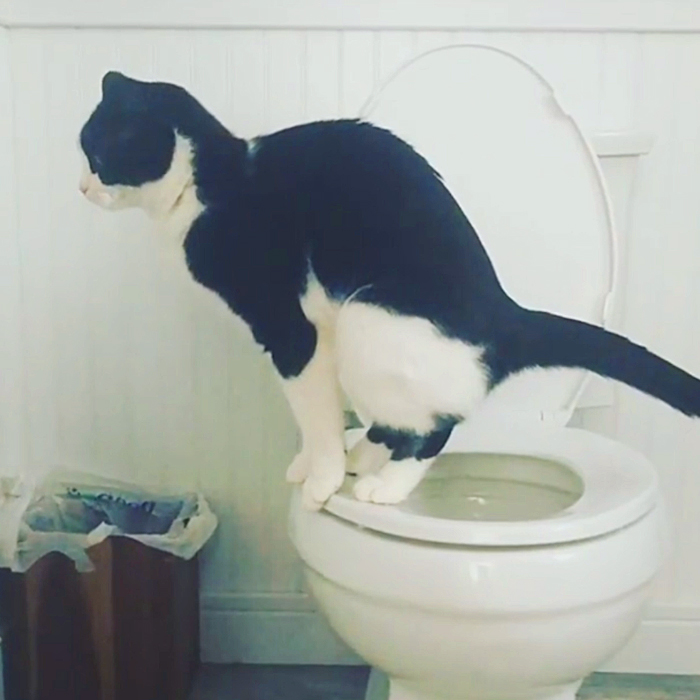Potential Risks of Flushing Cat Poop Down Your Toilet - Tips for Better Handling
Potential Risks of Flushing Cat Poop Down Your Toilet - Tips for Better Handling
Blog Article
Nearly everybody has his or her own idea in relation to Can You Flush Cat Poo or Litter Down the Toilet?.

Intro
As cat proprietors, it's vital to bear in mind exactly how we take care of our feline good friends' waste. While it might seem hassle-free to purge cat poop down the commode, this method can have harmful effects for both the setting and human health.
Ecological Impact
Flushing feline poop introduces dangerous pathogens and bloodsuckers right into the supply of water, posturing a considerable risk to marine ecosystems. These impurities can negatively impact aquatic life and concession water high quality.
Health and wellness Risks
In addition to ecological worries, flushing cat waste can likewise position wellness dangers to human beings. Pet cat feces may consist of Toxoplasma gondii, a bloodsucker that can trigger toxoplasmosis-- a potentially extreme illness, specifically for expecting females and individuals with damaged immune systems.
Alternatives to Flushing
Luckily, there are safer and much more accountable ways to throw away pet cat poop. Think about the adhering to alternatives:
1. Scoop and Dispose in Trash
One of the most common approach of throwing away cat poop is to scoop it right into a biodegradable bag and throw it in the trash. Be sure to utilize a specialized clutter scoop and throw away the waste immediately.
2. Use Biodegradable Litter
Opt for eco-friendly cat litter made from products such as corn or wheat. These trashes are environmentally friendly and can be securely dealt with in the trash.
3. Bury in the Yard
If you have a yard, consider burying cat waste in a designated location away from vegetable gardens and water sources. Make sure to dig deep adequate to avoid contamination of groundwater.
4. Set Up a Pet Waste Disposal System
Purchase an animal garbage disposal system specifically designed for feline waste. These systems use enzymes to break down the waste, minimizing smell and environmental influence.
Conclusion
Liable pet dog ownership expands beyond giving food and sanctuary-- it also entails correct waste administration. By refraining from flushing pet cat poop down the commode and opting for different disposal techniques, we can lessen our ecological footprint and secure human wellness.
Why Can’t I Flush Cat Poop?
It Spreads a Parasite
Cats are frequently infected with a parasite called toxoplasma gondii. The parasite causes an infection called toxoplasmosis. It is usually harmless to cats. The parasite only uses cat poop as a host for its eggs. Otherwise, the cat’s immune system usually keeps the infection at low enough levels to maintain its own health. But it does not stop the develop of eggs. These eggs are tiny and surprisingly tough. They may survive for a year before they begin to grow. But that’s the problem.
Our wastewater system is not designed to deal with toxoplasmosis eggs. Instead, most eggs will flush from your toilet into sewers and wastewater management plants. After the sewage is treated for many other harmful things in it, it is typically released into local rivers, lakes, or oceans. Here, the toxoplasmosis eggs can find new hosts, including starfish, crabs, otters, and many other wildlife. For many, this is a significant risk to their health. Toxoplasmosis can also end up infecting water sources that are important for agriculture, which means our deer, pigs, and sheep can get infected too.
Is There Risk to Humans?
There can be a risk to human life from flushing cat poop down the toilet. If you do so, the parasites from your cat’s poop can end up in shellfish, game animals, or livestock. If this meat is then served raw or undercooked, the people who eat it can get sick.
In fact, according to the CDC, 40 million people in the United States are infected with toxoplasma gondii. They get it from exposure to infected seafood, or from some kind of cat poop contamination, like drinking from a stream that is contaminated or touching anything that has come into contact with cat poop. That includes just cleaning a cat litter box.
Most people who get infected with these parasites will not develop any symptoms. However, for pregnant women or for those with compromised immune systems, the parasite can cause severe health problems.
How to Handle Cat Poop
The best way to handle cat poop is actually to clean the box more often. The eggs that the parasite sheds will not become active until one to five days after the cat poops. That means that if you clean daily, you’re much less likely to come into direct contact with infectious eggs.
That said, always dispose of cat poop in the garbage and not down the toilet. Wash your hands before and after you clean the litter box, and bring the bag of poop right outside to your garbage bins.
https://trenchlesssolutionsusa.com/why-cant-i-flush-cat-poop/

I recently found that blog posting on Can You Flush Cat Poo or Litter Down the Toilet? when doing a lookup on the web. Liked our blog? Please share it. Let someone else locate it. Thank you for taking the time to read it.
Call Today Report this page